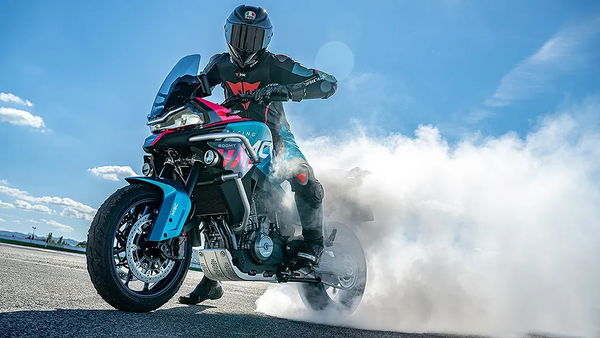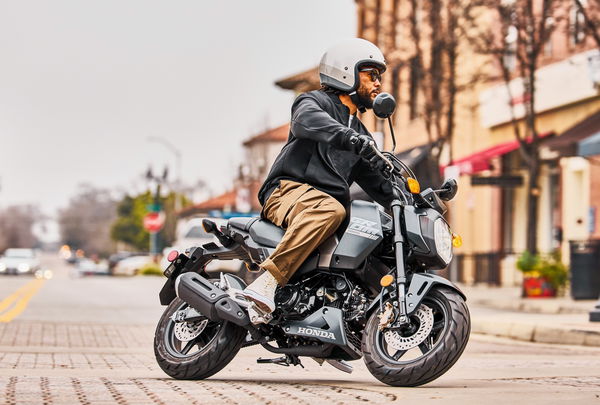Honda Transalp vs Suzuki V-Strom 800DE | ADV Motorcycle Head-to-Head
Visordown takes a deep dive into the spec and features of the new Honda XL750 Transalp and the Suzuki V-Strom 800DE as they battle for mid-weight adventure motorcycle dominance

THE EICMA show in Milan was a busy place to be a couple of Mondays ago, with new motorcycle launches and reveal events going on across the site. Two huge new motorcycle reveals, came in the form of the Honda XL750 Transalp, and the Suzuki V-Strom 800DE.
Both were launched within a matter of minutes, and the furore had journalists scrabbling around the sprawling Rho Fiera exhibition halls as we tried to get an idea of how this middleweight ADV battle could shape up. And it didn’t take much scrabbling to realise that these two bikes are very closely matched, on power, size, weight, and spec. To help you understand the differences between each motorcycle, we are going to take a deep dive into the spec of each, while we wait for our first rides in the new year.
Honda Transalp vs Suzuki V-Strom 800DE | Adventure Motorcycle Head-to-Head
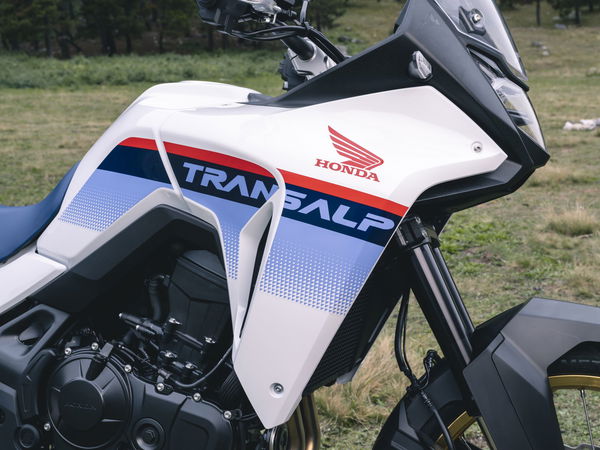
Engine and gearbox
Bike | Honda XL750 Transalp | Suzuki V-Strom 800DE |
Power | 90hp @ 9,500rpm | 84bhp @ 8,500rpm |
Torque | 55lb-ft @ 7,250rpm | 57lb-ft @ 6,800rpm |
Crank | 270° | 270° |
Quickshifter | No (option to add) | Yes (standard fit) |
Theoretical range (circa) | 240 miles | 270 miles |
Both machines we are looking at today will be arriving with parallel twin-cylinder engines, despite both ranges previously being famous for V-twins. The move is done in this case to keep the price point of the bike lower and make packaging the machine easier. It’s important to remember from the new Honda and Suzuki mid-weight ADV machines have siblings in the naked class, so the parallel twin route was a much safer option.
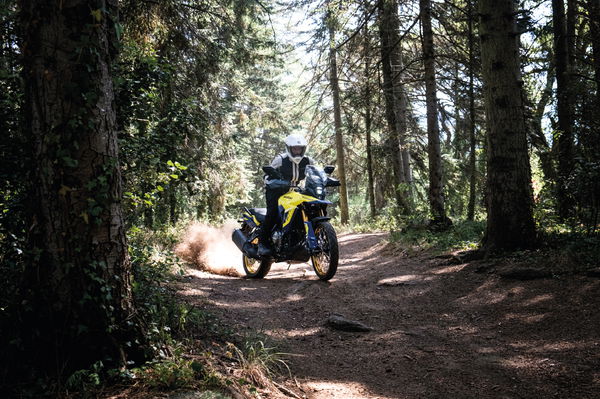
The Suzuki is fitted with a 776cc, DOHC engine, and is claimed to be producing 84hp and 57lb-ft of torque. Peak power for the Suzuki arrives at 8,500rpm, while peak torque comes in at a heady 6,800rpm. The engine features a four-valve design, a 270-degree crank and two balancers for smoother running.
Honda’s new Transalp is fitted with a 755cc unit, featuring the same four-valve per-cylinder design as the Suzuki. It too has a 270-degree crank and is slated to produce 90hp and 55lb-ft of torque. Peak power for the Transalp will see the rev-counter hitting 9,500rpm, while peak torque is delivered at 7,250rpm – 450rpm higher than the Suzuki.
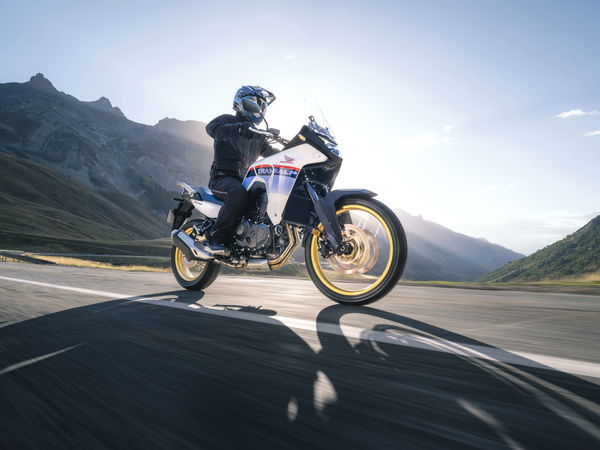
Whether or not you’ll feel the extra revs on the road (or trail) remains to be seen, although it's already clear that the low-revving and torque-laden character of the previous versions of each motorcycle won't carry over to the 2023 machines. It’s something you may need to consider if you are looking at these as an on and off-road machine, although as the chart-topping KTM 890 Adventure proves, high-revving engines don’t have to hold you back when riding off-road.
Both bikes put the power to the ground via a slipper-clutch equipped, six-speed gearbox. The Honda is running a trick system, with F.C.C Leaning Segment discs. Its makers claim it reduces clutch drag torque by 30%, making for a lighter lever feel and cleaner upshifts. The V-Storm is fitted with the Suzuki Clutch Assist System, for claimed smoother downshifts.

With regards to fuel economy, we won’t really know until we get out on real roads and away from the glitz of the motorcycle press launch. We can though get an idea by looking at the quote MPG figures for the bikes, and for once, there is a bit of distance between the two bikes. Suzuki is claiming the new V-Strom 800DE can return 64mpg, while Honda is claiming a significantly lower 23km/l – 54mpg. Going by those numbers, the Transalp and its 16.9-litre tank could take you around 240 miles compared to the V-Strom’s theoretical range of 270 miles from its 20-litre item.
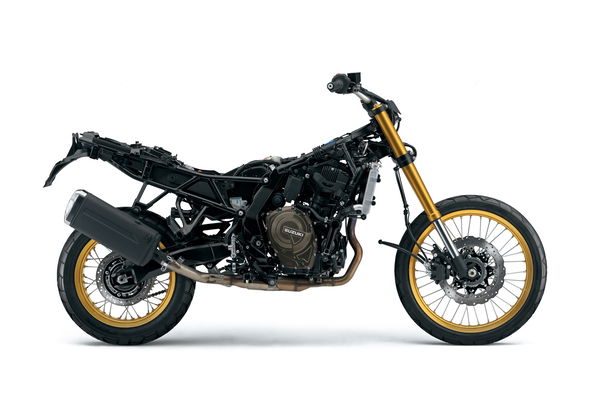
Chassis, Suspension and Brakes
Bike | Honda XL750 Transalp | Suzuki V-Strom 800DE |
Weight | 208kg (quoted kerb) | 230kg (quoted kerb) |
Ground clearance | 210mm | 220mm |
Travel (f/r) | 200mm/190mm | 220mm/220mm |
Seat height | 850mm | 855mm |
Both bikes feature all-new chassis designs, not hopped-up versions of existing bikes in the range. Both machines feature rugged yet lightweight frames, that only really differ in that the Honda has an integral sub-frame, while the Suzuki uses a bolt-on design. Both bikes feature a steel-constructed diamond frame, that mounts the engine within it as a stressed member.
The geometry of the two is also very similar, with the Honda featuring rake and trail set at 27 degrees and 111mm respectively, and a wheelbase of 1560mm. The Suzuki boasts 28 degrees of rake and 114 mm of trail, with an overall wheelbase of 1570mm. Based on these numbers at least, there should be very little to call when it comes to the handling of the two new models. If anything, the Suzuki might feel a little more relaxed, while the Honda might be slightly more eager to turn into a corner. Whether or not that will be felt on the road though is another matter.
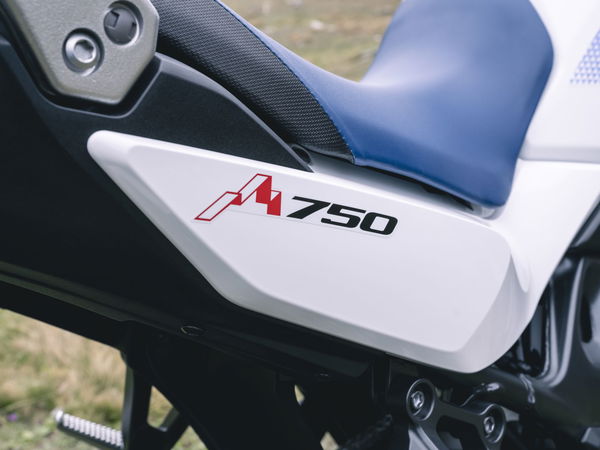
The seat height of each motorcycle is, again, very close. We aren’t quite splitting hairs just yet, but with an 850mm seat on the Honda and an 855mm item on the Suzuki, it looks like they’ll both be suitable for the vast majority of riders. It’s worth noting that both bikes also offer options for different seats, with the Honda boasting a low-seat option, and Suzuki offering low (-20mm) and high (+30mm) seat versions available as an official accessory.
One piece of information that will be felt on the road is the weight, and as it stands, kerb mass is the only real thing that sets the two bikes apart. The Honda has a quoted kerb mass of 208kg, putting it right in the mix when compared to both the 890 Adventure and Yamaha Tenere 700. The Suzuki though comes in a fair bit heavier than all three, with a quoted kerb weight of 230kg. That not only makes it the heaviest of the big players in the mid-weight adventure market but also heavy than Honda’s smallest Africa Twin variant! For a supposed mid-weight adventure bike, that’s quite a lot of mass to pick up off the floor on a muddy trail!
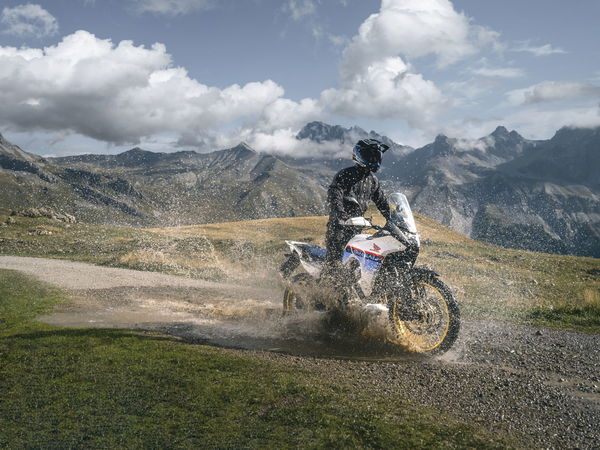
On the suspension front, the Honda comes equipped with Showa 43mm SFF-CATM (Separate Function Fork-Cartridge) USD forks, offering 200mm travel with spring preload adjustment. At the rear, there is a remote reservoir Showa shock (with adjustable preload) that links to the swingarm via a Pro-Link system and offers 190mm of travel. The overall ground clearance of the Transalp is 210mm.
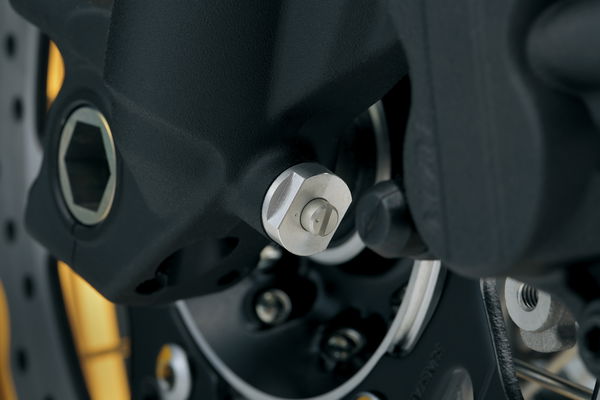
Moving over to the Suzuki and we again find Showa suspension, although this time with fully adjustable forks and a rear shock absorber. The design provides the V-Strom 800DE with a slightly longer amount of wheel travel than the Transalp of 220mm, and it has an overall ground clearance of 220mm.
Braking on both bikes is taken care of by dual Nissin two-piston calipers at the front and 310mm wavy discs. The rear brake on the Honda is a 256mm ‘wave’ disc operated by a single-piston caliper, and on the Suzuki, we find a single piston and sliding caliper and a conventional 260mm disc.
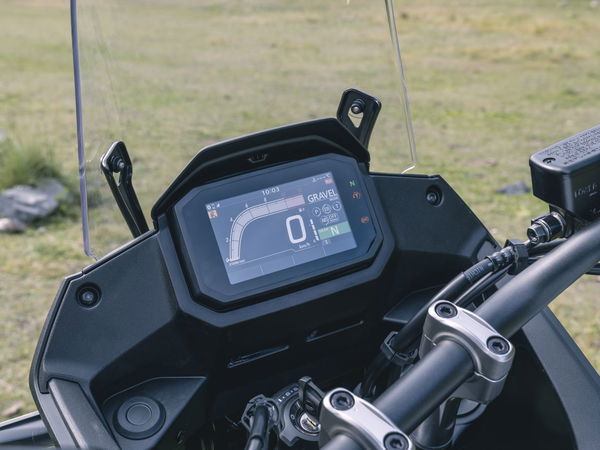
Electronics
Bike | Honda XL750 Transalp | Suzuki V-Strom 800DE |
TC | Yes - five stages (and off) | Yes – four stages (and off) |
ABS | 2-channel (and off) | 2-channel (and off) |
TFT | Yes | TFT |
Bluetooth | Yes | No |
One area where both these bikes borrow from bigger siblings is on the electronics front, with the Africa Twin playing a big part in the Transalp system, and the V-Strom 1050 inspiring that found on the 800 DS. That said, they are paired-down versions of those found on the more premium ADV bikes. The first place you’ll notice that is in the ABS, which is a conventional 2-channel system with no cornering function. You do get multi-level ABS on both though, and crucially both give the option of switching the ABS off to the rear wheel altogether.
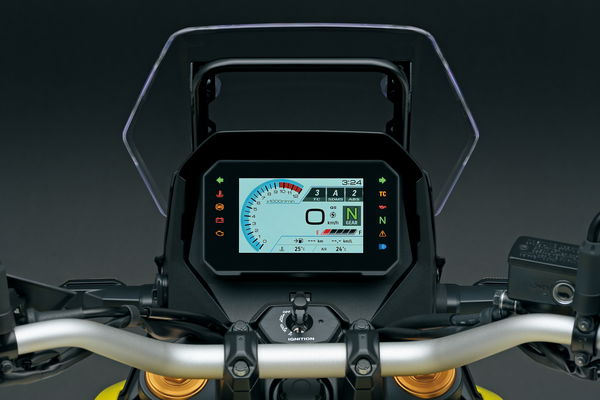
On the traction control front, both get multi-level adjustment and their own bespoke off-road setting. The Honda boasts five stages of traction control adjustment with integrated wheelie control. The Suzuki on the other hand boasts four levels of adjustment and both machines allow the rider to turn the system off altogether.
One unusual area of difference between the two models is that the Transalp arrives in showrooms without a quickshifter while the V-Strom 800 DS gets a bi-directional one as standard for clutchless up and downshifts. Honda is giving riders the option to add one though, as a system is offered as an aftermarket addition that can be fitted at the dealer.
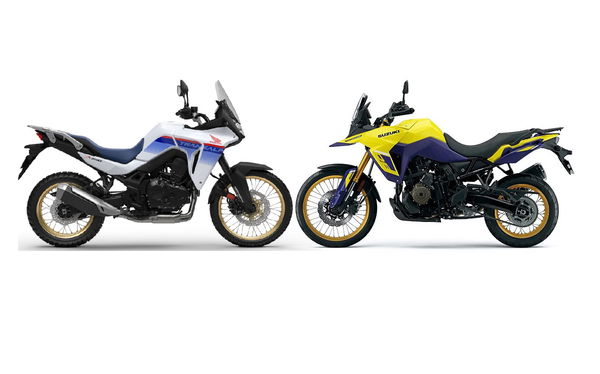
Verdict
It was clear within minutes of each motorcycle being launched in EICMA that the gap between them was going to be very close indeed, although it’s only when you pour over the spec sheets for each that you realise just how close they are. The engines are so close on so many metrics they could almost be interchangeable, and the electronics almost look like the two teams have designed them in tandem. And while there are some small changes in geometry from one to the other, whether or not those will be felt on the road or trail remains to be seen.
Another yet-to-be-discovered piece of information about both is the price, as both Honda and Suzuki remained tight-lipped at the show about what that might be. While we are sure they will both be competitive, we can only speculate as to what it actually costs to land one in your garage. If the Suzuki is as cheap to buy as some of the other bikes in the range are (and you can forgive it for being slightly heavier), the new V-Strom might be a very enticing motorcycle for on-road touring and light off-road work. That said, the Transalp is a legendary name in the field, with its lighter weight and almost equal spec, those who fell in love with the original XL models may want to rekindle that relationship.
